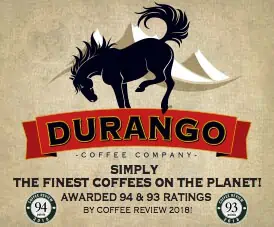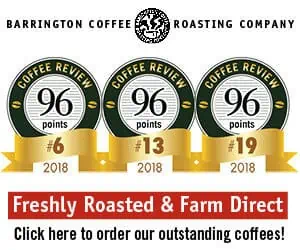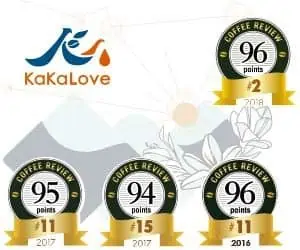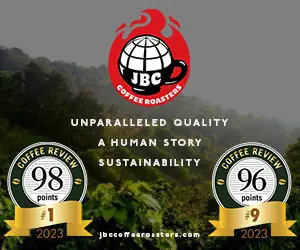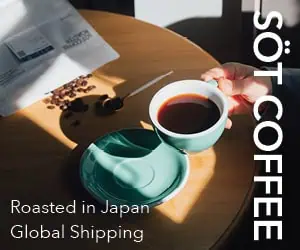Three issues weave their way through this report of my collaborative June cupping of Costa Rica coffees with leading coffee buyer and writer Kevin Knox.
The first: Based on our limited sampling, what kind of coffee experience are this year’s Costa Ricas likely to deliver to the consumer?
The second: Is the cupper wearing his new clothes? How much agreement in language and taste can we expect when two coffee professionals evaluate and describe the same set of specialty coffees without talking to one another about those coffees?
The third (which Kevin raises in his sidebar article On Matching Roast to Bean): What responsibility does the specialty coffee roaster have to the character of a green coffee when roasting it?
Seventeen Costa Ricas
Balanced, resonant, big-bodied and grandly acidy, the finest Costa Rica coffees are classic in the sophisticated sense of that abused term. They give us the pleasures of clarity and clean definition rather than ambiguity, surprise or mystery.
Most likely this prevailing cup character derives from variety of coffee tree (most Costa Rica coffee is produced from trees of the straightforward-tasting cultivar Caturra) and sophisticated fruit removal and drying, which eliminates flavor twists and ambiguities that idiosyncratic processing imparts to some other origins.
My cupping partner for this month, Kevin Knox (distinguished coffee commentator and buyer for Allegro Coffee), and I sampled seventeen Costa Ricas from nine different American specialty roasters. We cupped them (as usual) blind, identified only by three-digit numbers. We conducted our cuppings at different times in separate locations with a minimum of phone conversation about the coffees. Of the seventeen, we report here on the ten that impressed us the most. Our blind assessments were written before we were apprised of the identity of the coffees, and appear here verbatim.
Unfortunately, several of the most celebrated Costa Rican estates and coffee-growing districts were not represented by our samples, in part because some of this year’s highest grown Costa Rica coffees were not yet available to roasters. But enough impressive coffees did show up to demonstrate why Costa Rica remains one of the world’s most impressive origins.
Cupping Consensus?
When two cuppers a thousand miles apart sample the same coffees and scribble notes without sharing them, how much consensus do you get?
Enough agreement, it would appear, to challenge those who suspect that we are making all of these fancy words up, but enough difference to demonstrate that cupping remains as much art as science.
Those who read the following reviews carefully will notice that, in most cases, Kevin and I definitely are describing the same coffees and reacting to roughly the same sensations. But we tend to use somewhat different, though overlapping, words to describe what we are tasting. And we often tend to give somewhat different value to what we taste.
For example, we appeared to differ in how much importance we attached to whether coffees fit the classic Costa Rica flavor profile. Kevin admired the Tres Rios from Bucks County Coffee in part because its powerful acidity, big body, and bell-like simplicity fit his expectation for a high-grown Costa Rica. For my part, I felt that the acidity of the Bucks County Tres Rios was a little overbearing and the profile generally too blunt, no matter where the coffee came from. On the other hand, Kevin did not have much good to say about the atypically nuanced 2000/01 crop La Magnolia from Flying Goat Coffee, which I admired greatly for its offbeat (and non-Costa-Rica) complication and nuance.
Such a difference in emphasis often surfaces at green coffee competitions, where some judges prefer to evaluate coffees against a set of expectations based on the specific origin they are cupping, whereas others are open to oddities and differences and inclined to honor them.
The Roasting Issue
Kevin’s emphasis on origin profile also may have something to do with the concerns about roasting style that he shares in his sidebar piece On Matching Roast to Bean.
Kevin assumes that when a roaster offers a Costa Rica it ought to be roasted so as to bring out the characteristics that mark it as a Costa Rica in the first place. Most readers probably are aware that darker roast styles tend to mute or dampen the flavor characteristics of the original green coffee while developing certain roast-related characteristics like pungency, sweetness, and (if the roast is not extremely dark) body. So a roaster who wants to remain loyal to the character of the original green coffee needs either to bring that coffee to a medium to medium-dark roast, or handle a darker roast tactfully enough to maintain the coffee’s origin-related distinction even in a darker roast style. Responding to a coffee not reviewed here, Kevin dismissed a Costa Rica that was roasted beyond recognition as “French-roasted who knows what.”
Although I share Kevin’s profound objection to roasters who literally reduce every coffee in their inventory to the same shrill, thin-bodied, monotonously similar “French roast,” I found that my reactions to darker roast styles, at least as they manifested in this cupping, were slightly more accepting (or sloppy) than his. In general, I seemed a bit more ready to honor a dark roast that maintained sweetness, complexity and body, even if its Costa Rica character got a bit compromised in the process.
Nevertheless, we gave very similar ratings to the two darker roasted coffees that made it to the final cut (those that hit the “sweet spot of the old Peet’s/Starbucks roasting” as Kevin puts it), the Café Britt Costa Rica Espresso Roast and the Alpen Sierra Costa Rica La Luna Tarrazu. And we were unanimous generally in celebrating those coffees that, in one way or another, fore grounded the clarity and power of the Costa Rica profile.

